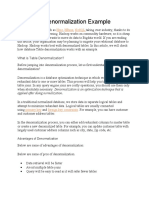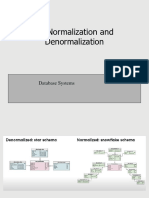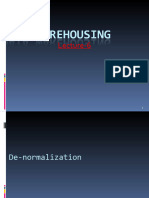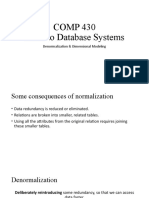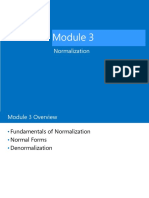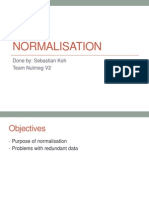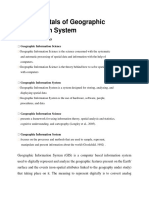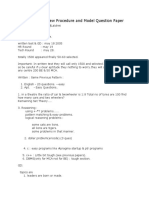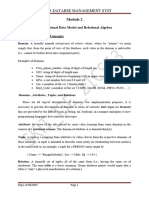Normalized and denormalized data
So far, you’ve learned about normalization and denormalization. As a refresher, normalization is
the process of structuring a relational database in accordance with a series of so-called
normal forms to reduce data redundancy, and improve data integrity. Denormalization is a
database optimization technique in which redundant data is added to one or more tables. In
this reading, you’ll learn more about normalization and denormalization, when it's most useful
to normalize or denormalize data, and what storage systems these different data formats
require.
When to normalize or denormalize data
There are advantages to both normalization and denormalization that can help you decide
what kind of data is appropriate for your organization’s data needs.
Data format Advantages
Normalized ● Avoids duplicate data and inconsistencies
● Quickly applies updates
● Optimizes memory to promote performance
● Maintains integrity
Denormalized ● Improves execution time for queries
● Reduces number of tables to cut down on storage resources
● Is an alternative to expensive table JOINs
● Enhances scalability for changing data needs
● Reduces overall complexity
Depending on your organization’s needs, you might choose to normalize or denormalize your
database. For example, in a transactional database, read speed and fast performance are
necessary to quickly fetch information, and complete transactions. But, if there isn’t a need to
JOIN tables very often, you might choose to normalize your database to promote these
functions. On the other hand, for analytical systems where data needs to be consistent and
clean for analysis, and users are making updates or JOINING tables frequently, a denormalized
system is more beneficial because the tables can be pre-joined.
How normalized and denormalized data is stored
Traditionally, normalized data is organized using relational database schemas, like star and
snowflake models. These schemas use shared fields called database keys to connect tables,
and build relationships between them that allow users to JOIN them. An example of a relational
1
�schema is a star schema, which consists of one fact table that references any number of
dimension tables. Similarly, a snowflake schema is an extension of a star schema with
additional dimensions and, often, subdimensions.
These schemas can be denormalized by adding duplicate columns, splitting tables, and
creating mirror tables that copy the original, or even summary tables.
There are also completely denormalized schemas, like flat models. Flattened schemas are
simple database systems with a single table in which each record is represented by a single
row of data. Flat models are not relational; they don’t depend on additional relationships
between tables. Instead, the single table already models all possible relationships, which can
result in duplicated data. Because of this, flat models are usually used as a potential source
within a data system to capture less complex data that doesn’t need to be updated, like
historical data used for analysis in a data warehouse.
Key takeaways
As a cloud data professional, recognizing how an organization is using data, and what their
needs are, will help you develop a cloud system. Normalized and denormalized data both have
distinct advantages you may want to consider. So, recognizing the utility of these different
data formats can help you design and implement the right system for your organization.














